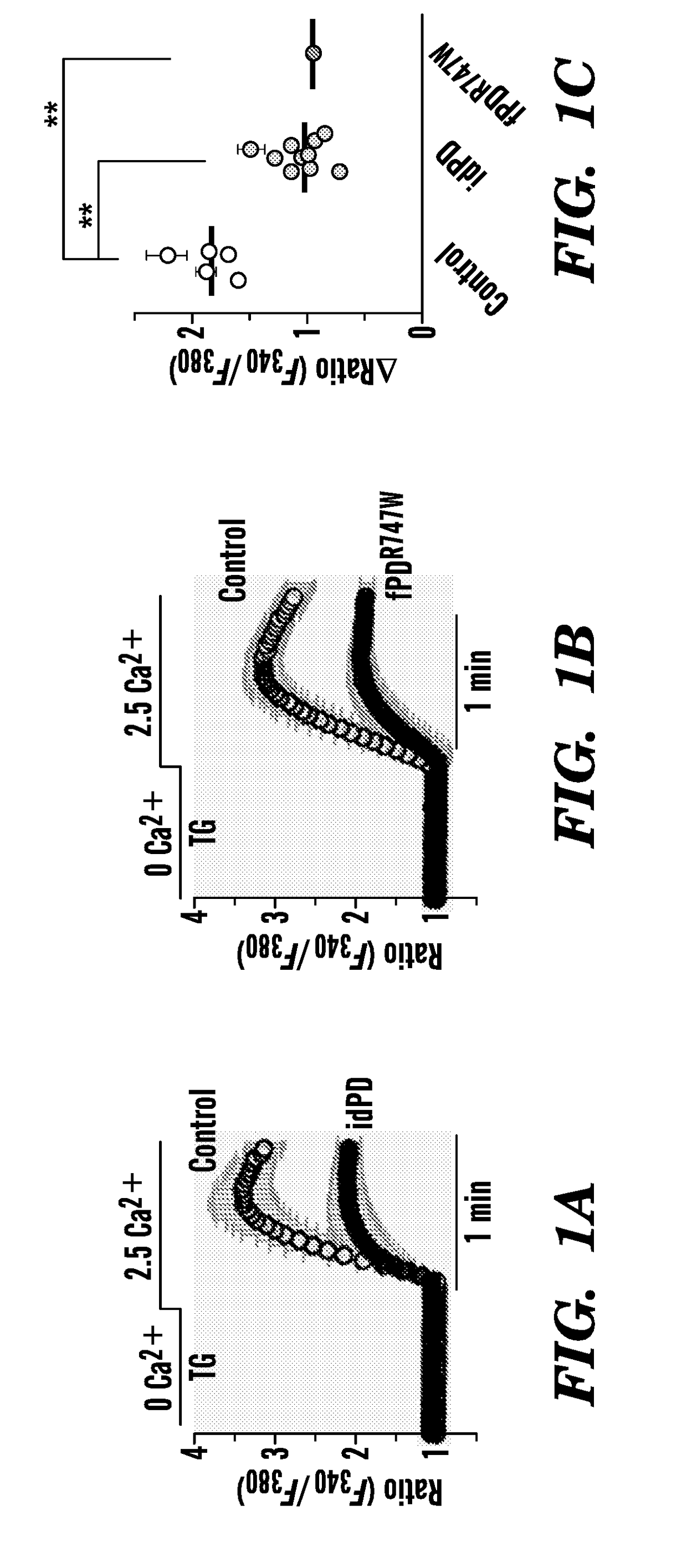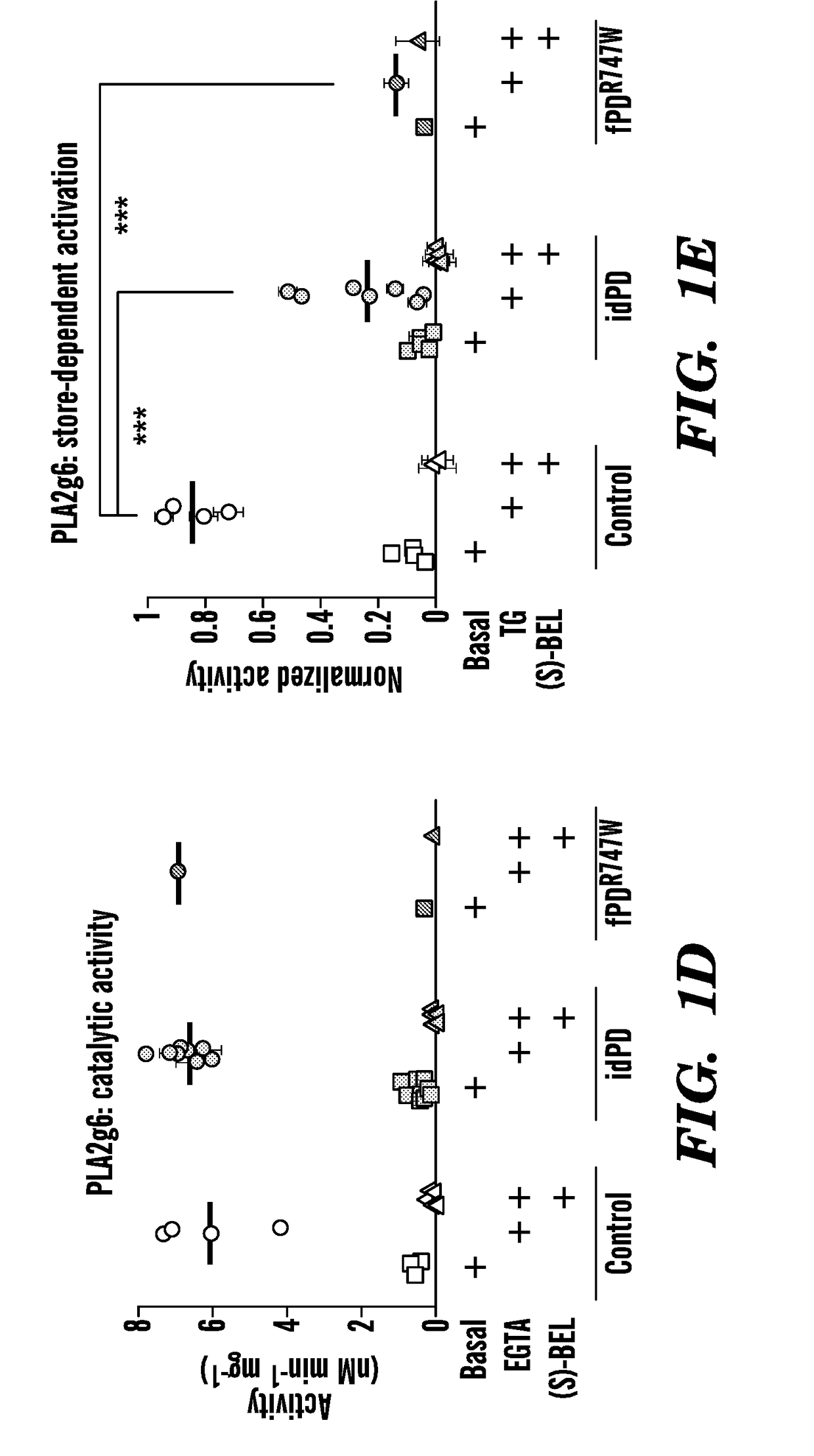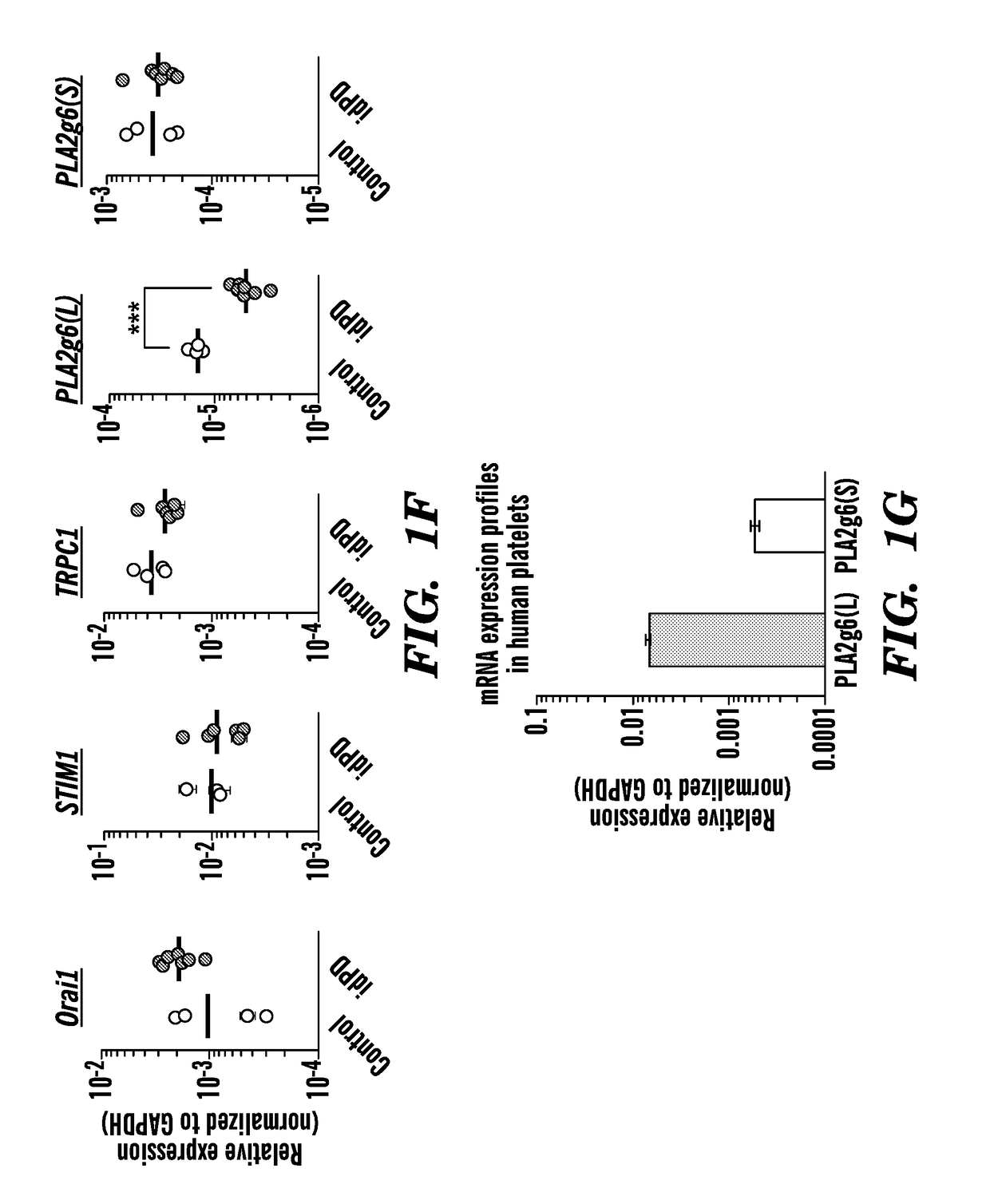Biomarkers for the early detection of parkinson's disease
a biomarker and parkinson's disease technology, applied in the field of parkinson's disease biomarkers, can solve the problems of reducing the quality of life of people, no established markers or routine screening approaches/procedures for the prediction or detection of human pd, no established markers or routine screening approaches/procedures for human pd, etc., to achieve the impairment of ca2+ signaling function, impairment of pla2g6(l) expression and/or function
- Summary
- Abstract
- Description
- Claims
- Application Information
AI Technical Summary
Benefits of technology
Problems solved by technology
Method used
Image
Examples
example 1
[0531]The etiology of idiopathic Parkinson's disease (PD) remains enigmatic despite recent successes in identification of numerous genes (PARKs) that underlie familial PD. To find new keys to this still incurable neurodegenerative disorder, the inventors focused on the poorly understood PARK14 disease locus (identified as the Pla2g6 gene) and the store-operated Ca2+ signaling pathway. Analysis of the cells from idiopathic PD (idPD) patients revealed a significant deficiency in store-operated PLA2g6(L)-dependent Ca2+ signaling, which we could mimic in a new B6.Cg-Pla2g6ΔEx2-VB (PLA2g6 ex2KO) mouse model. Here, the inventors demonstrate that genetic or molecular impairment of PLA2g6(L)-dependent Ca2+ signaling is a trigger for autophagic dysfunction, progressive loss of dopaminergic (DA) neurons in substantia nigra pars compacta (SNc) and age-dependent L-DOPA-sensitive motor dysfunction. Discovery of this previously unknown sequence of pathological events contributes to iPD, and the a...
example 2
[0540]PLA2g6 Ex2KO Mice Mimics SOCE Deficiency in idPD Patients
[0541]To determine if and how the defects in the store-dependent activation of PLA2g6 and impaired SOCE could be translated into the age-dependent PD, the inventors used a mouse model with targeted impairment of these specific cellular functions. Currently existing transgenic PLA2g6 mouse models12-18 appear to be unsuitable for PD studies, as they have impaired catalytic activity of PLA2g6, which the inventors discovered was unaffected in idPD patients. Moreover, PD pathology develops later in life, while the loss of catalytic activity of PLA2g6 is associated with infantile neuroaxonal dystrophy (INAD) and early death in mice and humans.
[0542]To create a new model suitable for PD studies, the inventors targeted PLA2g6 in a different manner. The inventors tested the hypothesis that if a genetic deletion of the N terminus of PLA2g6 (FIG. 2A) does not affect its catalytic activity (encoded by S519-containing catalytic domai...
example 3
[0547]iPSC-Derived DA Neurons from PLA2g6 Ex2KO and WT Mice
[0548]The role of SOCE in live dopaminergic (DA) neurons is obscure, so the inventor addressed two additional questions: (i) whether SOCE is present in DA neurons, and (ii) if DA neurons from PLA2g6 ex2KO mice had similar defects in SOCE and ER Ca2+, as the inventors had discovered in human fibroblasts. To assess the role of PLA2g6 and SOCE in live DA neurons, an iPSC (induced pluripotent stem cell) approach was used to create iPSC-derived A9 midbrain DA neurons42 from WT and PLA2g6 ex2KO mouse embryonic fibroblasts (see Methods and Data not shown, which showed co-localization of TH with other dopaminergic neuronal proteins (DAT and VMAT2) typical for mature DA neurons.).
[0549]Live cell Ca2+ imaging (FIG. 3A, 3B) revealed that iPSC-derived TH-positive (TH+) DA neurons indeed have classical TG-induced Ca2+ responses (FIG. 3C), including passive release of Ca2+ from the stores and SOCE that could be detected upon Ca2+ re-addit...
PUM
| Property | Measurement | Unit |
|---|---|---|
| area | aaaaa | aaaaa |
| area | aaaaa | aaaaa |
| area | aaaaa | aaaaa |
Abstract
Description
Claims
Application Information
 Login to View More
Login to View More - R&D
- Intellectual Property
- Life Sciences
- Materials
- Tech Scout
- Unparalleled Data Quality
- Higher Quality Content
- 60% Fewer Hallucinations
Browse by: Latest US Patents, China's latest patents, Technical Efficacy Thesaurus, Application Domain, Technology Topic, Popular Technical Reports.
© 2025 PatSnap. All rights reserved.Legal|Privacy policy|Modern Slavery Act Transparency Statement|Sitemap|About US| Contact US: help@patsnap.com



